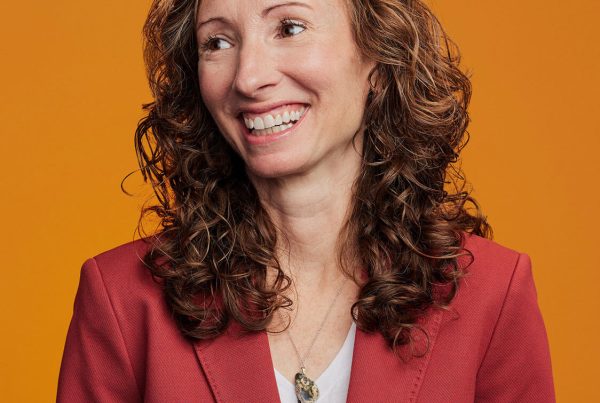Used to describe an unpredictable event with severe after-effects, “Black Swan” is the trending term of choice to make sense of the pandemic and 2020 at large. But Valerie Jacobs, Chief Growth Officer and longtime futurist, argues it isn’t a Black Swan at all—and that foresight could have given us a plan for 2020’s “surprises.” Begging the question: why aren’t more businesses strategizing for the discontinuities that naturally occur?
Since March, I think many people have been wondering: “how did we get here?” And by here, I mean living in a world where it seems things have spun completely out of control: a pandemic, a nail-biting election, unrest in major cities across the US and an economy that feels a bit like a yo-yo. The past several months have sparked a lot of debate amongst our foresight experts: was Covid-19 a Black Swan event? The term, first coined by futurist Nassim Nicholas Taleb in his 2007 book of the same name, has become the most popular rationale for the conditions we’ve been enduring in 2020.
“The pandemic was in no way unpredictable, nor was it an extreme rarity.”
Personally, I do not think the pandemic was a Black Swan. (And Taleb is in the same camp.) But let’s step back. According to a more specific definition, a Black Swan is an unpredictable event that is characterized by its extreme rarity, devastating impact and the widespread insistence that it was obvious in hindsight.
For many, it seems like Covid-19 would qualify. In our lifetimes, nothing of this sort has occurred, making it seem unpredictable, and there’s no denying we will be dealing with the fallout for years. But the pandemic was in no way unpredictable, nor was it an extreme rarity. To characterize this year as one that no one could have anticipated would be hyperbolic and discount a long history of racism, the growing inequity chasm, a climate in crisis and signals of a pandemic that were evident in the very first month of this year. The primary problem with the situation is that no one had really planned for discontinuities to occur in their worldview (or business plan). I keep thinking about the hindsight part of the definition. And that’s why I think we could ask a better question. What would we have done if we relied on foresight instead?
When we consider the power of foresight (a strategic way of planning for the future), the pandemic was both conceivable and plausible: a prime example of why it’s so critical to strategize for the discontinuities that can and do occur—however unlikely they may seem. And at its core, the point of foresight work is to purposely add discontinuities into your future worldview, making you better prepared for whatever unfolds.
So first, it might help if we put this into an even bigger context. Let’s talk about a number of other shifts that have impacted where we are right now, and how those events—many of which seemed negligible at the time—played a major role in creating the sociocultural landscape we had as we entered into 2020. To do that, let’s rewind to 2010.
“In 2010, the US dodged a bullet. And that’s precisely why we needed to plan for an outcome that was different than 2010.”
Rewind to 2010
The first Uber ride. The first Birchbox subscription. The first iPad. 2010 was a year of firsts that indicated “weak signals” of discontinuity in how we live and work right now. And though it may feel like a blur now, it was also the year of a pandemic: the United States was in the midst of the second wave of H1N1, which ultimately resulted in over 60 million cases, nearly 300,000 hospitalizations and over 12,000 deaths. And while these numbers seem to pale in comparison to where we are with Covid-19, they are significant figures. Just because this incident didn’t shutter the economy and halt everyday life for months on end doesn’t mean it wasn’t a signal that we needed to take stock and consider how we—as people, governments and businesses—should prepare for a global health crisis.
In 2010, the US dodged a bullet. Plain and simple. And that’s precisely why we needed to plan for an outcome that was different than 2010.
Again, let’s look at other forces that gained steam over the decade: Instagram launched, ultimately delivering an entirely new notion of an “influencer.” Neither Facebook nor Google seemed destined to become bastions of advertising or retail. No one knew the term “surveillance capitalism” or the way these and other Big Tech entities would shape our society. Let’s pile on: the modern gig economy didn’t exist, nor did the sharing economy. And it’s really hard to even imagine that, just 10 years ago, we still weren’t really all-in on e-commerce. It might seem a bit odd to mix this cocktail of forces that impacted media, advertising and branding with the idea of a pandemic. Their impact felt imperceptible at the time.
“What if, in 2010, you had envisioned a potential future in which all these shifts take place?”
To keep it fair, let’s talk about the things we got wrong. When Obama was elected, many believed that was a signal that we were entering into a new age of racial equality. Many expected to be farther along in our sustainability efforts, and that we’d have a healthier planet by now. And even 10 years ago, I’m pretty sure we considered extended reality and the actuality of AR/VR glasses on everyone’s head to be in the far-off future or simply still a science-fiction dream.
But my point is this: even before Covid-19 hit, many brand-builders’ worlds were deeply impacted and disrupted by these seemingly fringe or, at best, niche innovations from 2010. As all of these forces took shape, evolved and gained momentum, they changed the very nature of how brands interact with consumers. These forces created discontinuities in the trajectory of our society. Even the things we got wrong created discontinuities. And, ultimately, they left many long-standing, blue-chip consumer brands scratching their heads and flat-footed, wondering how they “suddenly” became so irrelevant and out of sync with both digitally native culture and commerce.
But, what if, in 2010, you had envisioned a potential future in which all these shifts took place? How might you have prepared your business for fragmented media, disrupted advertising and empowered consumers? The massive growth of e-commerce, the attention economy and calls for global sustainability? And beyond that, plausible yet unexpected forces like a novel coronavirus, the uprising in civil justice reform, a disrupted and declining economy, a polarized electorate, and extreme and disastrous weather patterns?
“I can’t help but consider the ways businesses might have future-proofed their strategies for this very moment in time.”
Better Than Hindsight: Foresight
At LPK, we use a method called Landscape Scenario Planning (LSP) to do exactly that—to plan for the probable and improbable forces that could intersect in any number of ways. With this exercise, we purposely pose discontinuities in order to stretch our mental model of the world. These breaks from the current or “preferred” future can’t come from out of nowhere. They must follow a deep logic to explain how they might unfold and remain plausible. With LSP, businesses can develop readiness for various versions of the future (or scenarios), then strategize accordingly. Through deeply exploring uncertainties and imagining multiple ways things could play out, you begin to turn these uncertainties into a path to “robust” strategies (actions that work in multiple scenarios), in which case you “leverage your bets.” Or, perhaps the scenarios inform a series of small bets, so that you are poised to take advantage of a shift. Maybe your team creates contingency plans to buffer against unwanted developments. By mapping and understanding future threats and opportunities, you can create more malleable plans, designed to flex to various conditions that may or may not occur. You can monitor life as it unfolds, tracking the weak signals as they come into view, shifting gears as needed.
Looking back at 2010, I can’t help but consider the ways businesses might have future-proofed their strategies for this very moment in time. Across almost every category, we’d see more flexible, decentralized supply chains. More agility in manufacturing processes to accommodate changing consumer needs. Accelerated adoption of virtualization, and an ability to instantaneously process credibility and authentication. And perhaps stronger overall pandemic preparedness.
Fast-Forward to 2030
There’s a great quote from Bill Gates that puts these time spans into perspective: “Most people overestimate what they can do in one year, and underestimate what they can do in 10 years.” If the 2010s were about the sharing economy and the merger of social media and influencers to create a new breed of e-com, the 2020s will likely be about the fallout and recovery from a world that must socially distance and remains deeply ideologically divided.
“There’s a way your business can prepare for discontinuities, no matter the circumstances.”
Right now, we’re helping clients develop their Future Fluency and think about the future of work (a work-from-anywhere economy that will spur migration away from coastal cities), the future of emerging tech (think blockchain, extended reality, and voice-driven UX), and the future of brands (the dominance of e-com, emerging ideas for new consumer experiences, brand behavior in a polarized society and what’s next for faltering DTCs).
Confront Discontinuities with Future Fluency
So, I’ll close with this: in all actuality, it doesn’t matter if Covid-19 is a Black Swan or not. Because, there’s a way your business can prepare for discontinuities, no matter the circumstances. Even if a true Black Swan does occur, the mere fact that you’re considering the unexpected increases your ability to execute a strategic response versus scrambling to react. It’s not about prediction, post-rationalization or bracing for severe impact. The key is in your preparedness and ability to pivot. And not just once, but again and again over time. Develop this capability, both personally and professionally, and you’ll be at an enormous advantage.
Want to talk more about Future Fluency and navigating your business into 2021? Email Valerie to start a deeper conversation.








